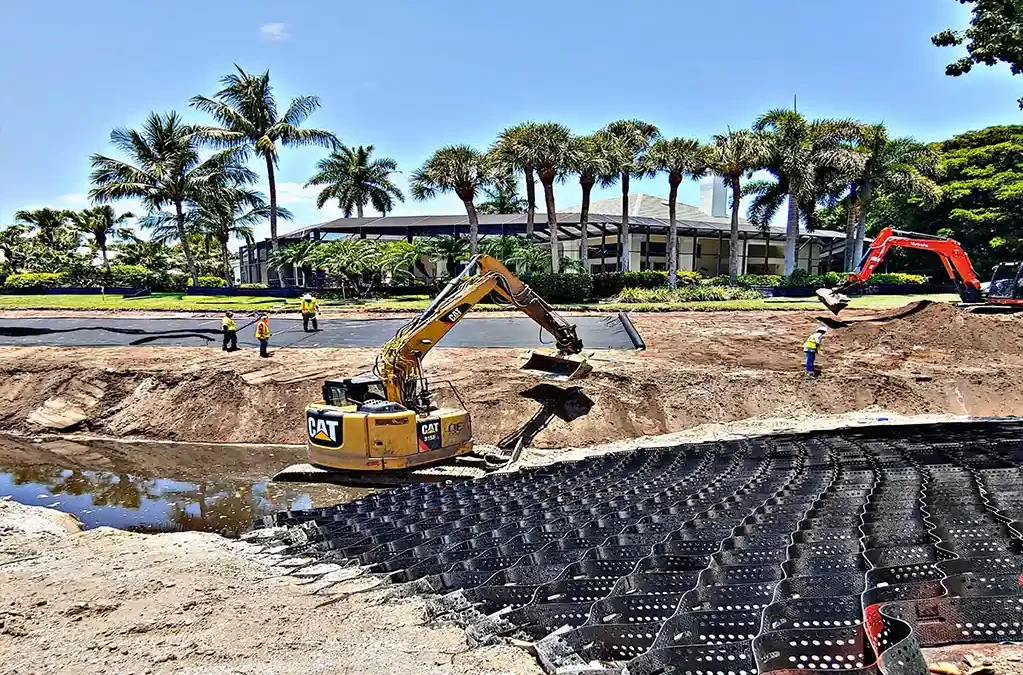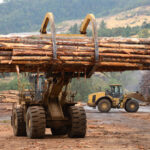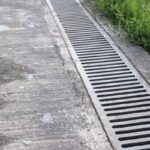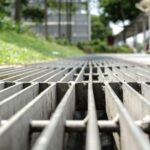Do I Need Erosion Control on My Northern Virginia Property?
Over time, the likes of wind and water can wreak havoc on land development, making soil erosion an issue for farmers, construction workers, and even property managers.
Erosion, specifically, is a process where rain or fast-moving water carries soil away over time.
Usually it’s a very long-term, natural process, but on construction sites and for property managers, it’s a problem that presents short-term challenges as well, particularly when it comes to depositing runoff in bodies of water or affecting other nearby properties with site contaminants.
In this article we will discuss erosion control tactics that property managers can administer to offset the consequences of erosion.
Why You Need Erosion Control
As we covered earlier in the piece, erosion control methods are essential to keeping soil, and other debris, on your property and away from neighboring properties or bodies of water.
Soil may erode due to wind force or water runoff.
On properties and construction sites, erosion can potentially spread contaminants into bodies of water and possibly even cause foundation degradation if the erosion is significant enough.
It’s why erosion control is a necessity in many environments, especially properties that are constructed on hills or slopes.
Ignoring erosion control can lead to land disputes and pollution.
Erosion Control Explained
Erosion control is essentially any measure that is taken to minimize or eliminate the effects of erosion, notably when it comes to soil.
Erosion control in Northern Virginia may involve constructing physical barriers to protect nearby properties or bodies of water.
It may also involve strategically planting crops or bushes to absorb wind and rain.
From an engineering standpoint the problem is twofold; how to stop offsite sedimentation during construction and also how to stop it once the project is completed.
Sites where 1 Acre or more is being denuded generally require a SWPPP (Stormwater Pollution Prevention Plan).
This document is required to contain a copy of the EPA general permit, site specific plans to contain sediment including BMP’s (Best Management Practices) and inspection logs complete with a record of how previous deficiencies have been corrected to date.
If you need more information, click here to know more.
The typical items one might see during construction include:
- A stone construction entrance with fabric underlayment: This reduces the chances of mud leaving the site on construction vehicle’s tires.
- Perimeter Silt Fence: This allows water to surface drain from a specified area but will catch the silt.
- Inlet protection: These can be barriers construction of silt fence around the inlet or bag systems to prevent sediment from entering the storm sewer, while still allowing water to drain.
- Rock Check Dams: These reduce the velocity of water traveling in ditches which reduces the turbidity of the water.
- Outlet Control Structures: It’s common to see a new site designed to direct all of the storm runoff into a detention system, most likely a pond or basin. As water accumulates in these basins, any silt in the runoff settles to the bottom. The outlet structure drains water from the surface instead of the bottom and typically drains it into a natural waterway.
- Temporary Ground Cover: This is typically construction seeding.
Once construction has been completed, you might see the items below:
- Constructing terraces: These act as a velocity control to slow down the rate at which water travels down a slope.
- Gabions: These provide permanent slope reinforcement to address potential bank erosion.
- Bioswales: Engineering soils at the bottom of swales or ditches allow some of the storm runoff to percolate into the ground, reducing the amount of water traveling to the storm sewer.
- Outlet structures: Similar to the description above, but these sometimes have a slight modification to convert from temporary to permanent.
- Permanent ground cover: Seeding may be grass, but also might be wild native mixes specifically chosen to prevent erosion.
Erosion Control Guidelines
We suggest always consulting with your municipality on erosion control methods, as many have requirements beyond the federal EPA requirements.
Erosion control doesn’t have to be costly. Nor does it have to be overly complicated. It just needs to be considered, in most cases, to minimize soil runoff and disbursement.
At K&B Brother’s Contractors‘s E&S Control our materials are designed to provide superior control on all types of landscapes and last through all weather.
Contact us here to learn more






